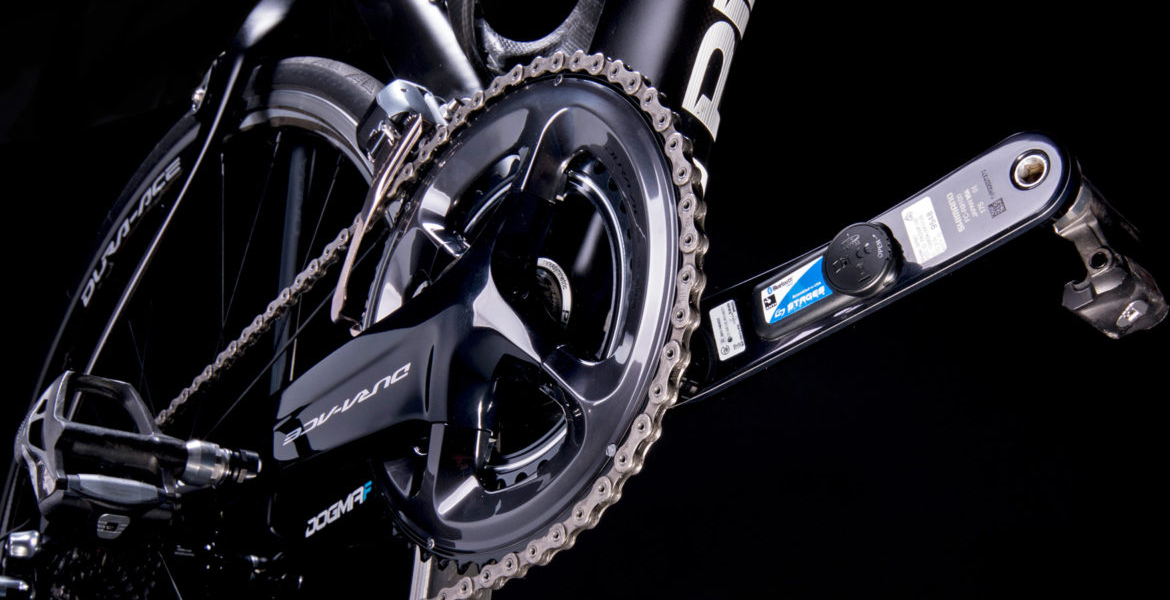Power meters are becoming more and more popular among cyclists who want to make the most out of their training, and when used correctly they are a powerful tool for making you faster and stronger. Fitness is measured directly through strain gauges to measure forces being exerted and this form of training eliminates variables that exist when riding outside such as the effects of elevation change and the weather for precise measurement of your progress. Data is transmitted to a head unit via ANT+ or Bluetooth so you can read outputs and analyse your stats after the ride.
Training with power is far more accurate than heart rate training alone; overtraining and fatigue can significantly affect your heart rate and consequently reduce the efficiency of your training.
Some of the benefits of training with power include being able to:
- Gauge your intensity more accurately than heart rate training
- Train more specifically
- Pace yourself during a race
- Identify and work on your weaknesses
- Monitor training adaptations and progress in combination with heart rate data
- Qualitatively track your fitness
- Test the efficiency of your position on the bike
Obviously there are some limitations:
- You need to be interested in analysing stats to make the most of it
- Rewards come from dedication to training
- Interpretation of data requires knowledge and experience
- It’s easy to get obsessed with stats - make sure you still enjoy riding

There is no one ‘best choice’ and how you wish to use your power meter, placement, and budget are among numerous other factors that will impact your decision.
Placement: Your bike setup or personal preference will impact what options are available to you. Manufacturers place the strain gauges in different locations, the most common being:
- Crank spider
- Crank arms
- Pedals
- Bottom bracket/Axle
Crank arm systems are one of the most popular and least expensive ways of training with power and can be swapped between bikes fairly easily. They can be single or double sided with the Stages Cycling one-sided system one of the most cost-effective solutions.
The main manufacturers of pedals systems are offered by Quarq and Garmin although others are available. Easy to swap between bikes and if you want to measure power through each leg independently then these are ideal, with some able to analyse your pedal stroke so you can see how efficiently you are spinning. Some offer one-sided measurement for a more budget option. Being exposed, they are more susceptible to damage and the way force is measured makes them less accurate. They are also not available for Shimano or Speedplay pedal systems which is a drawback for some riders.
Bottom bracket systems can be tricky to install and use is limited depending on your bottom bracket type, however, they are extremely accurate and easy to maintain once fitted.
Once you have decided that training with power is for you there are a huge range of options to choose from. Some excellent options utilising different systems include:
Favero Assioma DUO Dual-Sided Power Meter Pedals
Versatile and easy to swap between bikes, the Favero Assioma DUO Dual-Sided Power Meter Pedals will enable you to accurately monitor your power and enhance your training.
Stages Cycling Power l Ultegra R8100 Left Arm Power Meter
A double-sided pedal option the Stages Cycling Power l Ultegra R8100 Left Arm Power Meter only adds 15 grams to the arm and can last for up to 200 hours with its easily-replaced CR2032 battery.
Garmin Rally RK100 Single Sided Power Meter Pedals
As well as being super accurate, the Garmin Rally RK100 Single Sided Power Meter Pedals are Look Keo cleat compatible and the spindle design allows easy swapping with Garmin RS Shimano road or XC Shimano SPD off-road pedal bodies to suit a wide range of disciplines and rider's preferences.
Before training with power you should be clear about what you want from it, and be aware that making your training more specific can mean adapting your current ride schedule. You should follow a set training plan for the best fitness returns and make sure you understand how training zones work and why you are using them.

Power meters can provide you with tons of data which can be quite overwhelming and of limited use without a good understanding of what it all means. There are a number of metrics that can make your data meaningful post-ride and help you make the most of your training.
Functional Threshold Power (FTP): The highest sustainable power output that you can hold for 60 minutes, usually calculated after performing a 20 minute test, this is a reference to set up your training zones. It is a vital starting point for following a structured training program and keeping within zones will make it easier to enforce recovery days.
Average vs. Normalised Power: You could do two rides, one with a constant pace and one with easy and tough sections, resulting in the same average ride power. Normalised power gives you a more accurate indication of how physiologically tough the ride was; the metabolic cost. Using the Variability Index (normalised divided by average power) can help you avoid the common mistake of going out too hard in a race and burning out in the later stages.
Intensity Factor (IF): This is, simply put, how intense your ride was and is calculated by dividing normalised power with your FTP and multiplying by 100. The shorter the ride, the higher the IF can be.
Efficiency Factor: Power doesn’t replace heart rate in training and they actually complement one another. The Efficiency Factor is normalised power divided by average heart rate and is a direct measurement of your aerobic fitness so as your aerobic fitness improves you will have a higher wattage output for the same heart rate.
Kilojoules: Indicating work done, KJ’s correlates with calories for a good indication of how many calories you have burnt.
Your bike computer can be personalised to display all the data that is useful for your training and it’s best to enter as much information as possible to get the most accurate readings. Although all the above is useful for post-ride analysis, during your ride you will only need total power, plus the usual speed, cadence, distance, time and heart rate, on your main screen.

Purchasing a power meter can be a worthwhile investment and is one of the most effective ways of getting stronger and faster. Understand your data and you can improve the quality of every training session to get the results you are aiming for.








